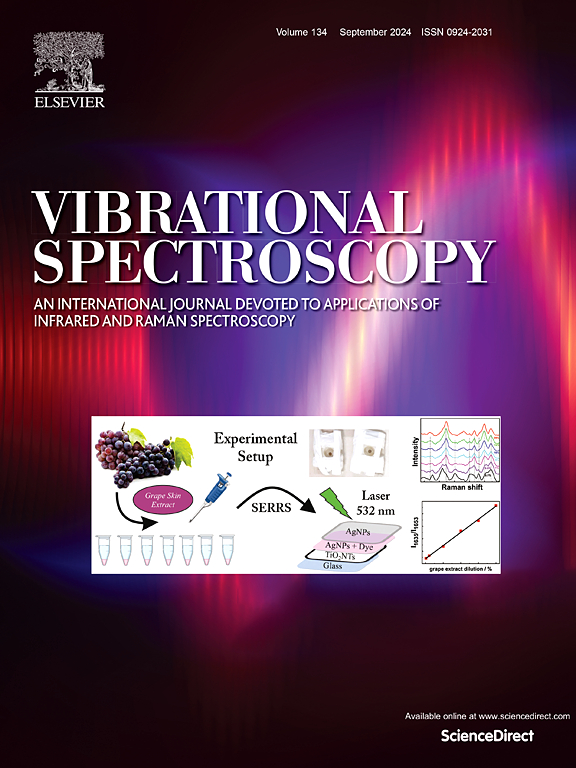提高湖平枣(酸枣)磨无损检测精度的可行性研究。简历。利用近红外光谱分析湖平损伤程度
IF 3.1
3区 化学
Q2 CHEMISTRY, ANALYTICAL
引用次数: 0
摘要
近红外(NIR)光谱技术在水果品质评估方面具有广阔的应用前景,但在损伤检测方面面临着鲁棒性的挑战,因为仅靠表面反射率不能完全表征内部和外部损伤特征。为了克服这一局限性,我们提出将近红外光谱与多位置光散射信息相结合,以提高枣无损损伤分级的准确性。以湖平枣树为研究对象,以受损枣树为研究对象。采集了三种不同损伤等级样品的近红外光谱。以损伤程度为参考指标,结合支持向量机(SVM)、随机森林(RF)、k近邻(KNN)、径向基函数网络(RBF)和长短期记忆(LSTM)五种机器学习算法,构建了单位置光谱与多位置检测数据融合的损伤程度识别模型。最优多位置光谱建模(MPSM)方法的测试集精度为100.00 %。与单位置光谱建模(SPSM)方法相比,MPSM融合方法的稳定性显著提高,准确率提高13.89 %以上。本研究建立了一种可靠的水果细微损伤无损检测方法,证明了多位置光谱融合在捕获亚表面损伤方面的有效性,并提供了一种可转移的框架,适用于其他易发生瘀伤的微妙水果。本文章由计算机程序翻译,如有差异,请以英文原文为准。
A feasibility study on improving the non-destructive detection accuracy of Huping jujube (Ziziphus jujuba Mill. cv. Huping) damage degree using near infrared spectroscopy
Near infrared (NIR) spectroscopy is promising for fruit quality assessment but faces robustness challenges in damage detection, as surface reflectance alone cannot fully characterize internal and external damage features. To overcome this limitation, we propose combining NIR spectroscopy with multi-position light scattering information to improve the accuracy of non-destructive jujube damage grading. The Huping jujube was impacted and the damaged jujube was taken as the sample. The NIR spectra of three kinds of samples with different damage grades are collected. With the damage degree as the reference index, five machine learning algorithms of Support Vector Machine (SVM), Random Forest (RF), K-Nearest Neighbor (KNN), Radial Basis Function network(RBF), and Long Short-Term Memory (LSTM) are combined to construct the damage degree identification model of single-position spectral and multi-position detection data fusion. The test set accuracy of the optimal multi-position spectral modeling (MPSM) method is 100.00 %. Compared with the single-position spectral modeling (SPSM) method, the stability of the MPSM fusion method is significantly improved, and the accuracy rate is increased by more than 13.89 %. This study established a reliable non-destructive detection method for subtle fruit damage, demonstrating the effectiveness of multi-position spectral fusion in capturing sub-surface damage and providing a transferable framework applicable to other bruise-prone delicate fruits.
求助全文
通过发布文献求助,成功后即可免费获取论文全文。
去求助
来源期刊

Vibrational Spectroscopy
化学-分析化学
CiteScore
4.70
自引率
4.00%
发文量
103
审稿时长
52 days
期刊介绍:
Vibrational Spectroscopy provides a vehicle for the publication of original research that focuses on vibrational spectroscopy. This covers infrared, near-infrared and Raman spectroscopies and publishes papers dealing with developments in applications, theory, techniques and instrumentation.
The topics covered by the journal include:
Sampling techniques,
Vibrational spectroscopy coupled with separation techniques,
Instrumentation (Fourier transform, conventional and laser based),
Data manipulation,
Spectra-structure correlation and group frequencies.
The application areas covered include:
Analytical chemistry,
Bio-organic and bio-inorganic chemistry,
Organic chemistry,
Inorganic chemistry,
Catalysis,
Environmental science,
Industrial chemistry,
Materials science,
Physical chemistry,
Polymer science,
Process control,
Specialized problem solving.
 求助内容:
求助内容: 应助结果提醒方式:
应助结果提醒方式:


